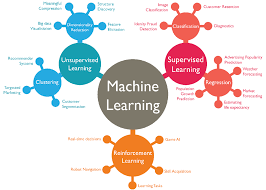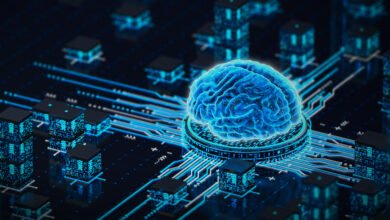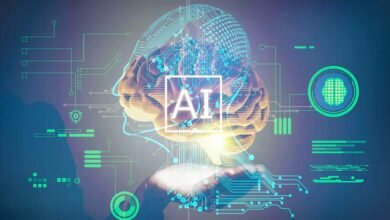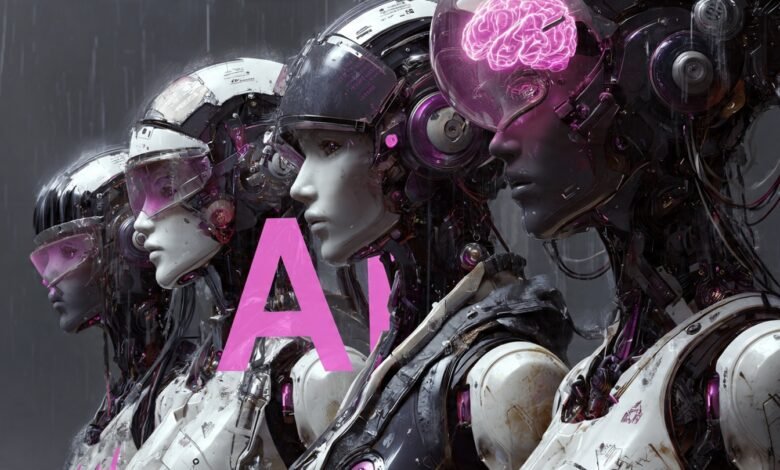
The artificial intelligence revolution has fundamentally transformed how organizations operate, compete, and innovate in the modern business landscape. As companies race to implement AI solutions and leverage machine learning capabilities, the demand for skilled AI professionals has reached unprecedented levels. However, building AI teams that can deliver tangible business value requires more than simply hiring individuals with technical expertise—it demands a strategic approach to talent acquisition, team composition, and ongoing management.
The challenge of hiring AI talent extends far beyond identifying candidates with the right technical qualifications. Organizations must navigate a highly competitive market where demand significantly outstrips supply, making it essential to develop compelling value propositions that attract top-tier professionals. Furthermore, the interdisciplinary nature of artificial intelligence projects necessitates teams comprising diverse skill sets, from data scientists and machine learning engineers to business analysts and product managers who can bridge the gap between technical capabilities and business objectives.
Managing AI teams presents its own unique set of challenges. Unlike traditional software development teams, AI development involves inherent uncertainty, experimentation, and iterative processes that require adaptive management approaches. Leaders must foster environments that encourage innovation while maintaining accountability, balance cutting-edge research with practical implementation, and ensure seamless collaboration between technical and non-technical stakeholders.
This comprehensive guide explores the critical components of building successful AI teams, from identifying the essential roles and skills required for different AI initiatives to implementing effective recruitment strategies that help you compete for scarce talent. We’ll examine proven frameworks for structuring your team, best practices for managing AI talent, and strategies for creating a culture that promotes continuous learning and innovation. Whether you’re establishing your organization’s first AI capability or scaling an existing team, this article provides actionable insights to help you navigate the complexities of assembling and leading high-performing AI teams that drive measurable business impact.
The AI Team Landscape
The landscape of AI teams has evolved dramatically over the past decade, transitioning from research-focused groups in academic institutions to essential business units driving competitive advantage across industries. This evolving landscape is crucial for organizations looking to build effective AI capabilities.
Modern artificial intelligence teams operate at the intersection of multiple disciplines, combining computer science, statistics, domain expertise, and business acumen. Unlike traditional IT departments, these teams must balance theoretical knowledge with practical implementation, requiring a unique blend of research capabilities and production-oriented engineering skills. The complexity of AI projects means that successful teams must navigate challenges ranging from data quality and model performance to ethical considerations and regulatory compliance.
The AI talent market has become increasingly competitive, with specialized roles commanding premium salaries and sign-on bonuses. Organizations compete not only with tech giants like Google, Amazon, and Microsoft but also with well-funded startups and research institutions. This competitive environment has made it essential for companies to develop compelling employee value propositions that extend beyond compensation to include opportunities for professional growth, access to cutting-edge technologies, and the ability to work on meaningful problems.
Essential Roles in AI Teams
Building a comprehensive AI team requires distinct roles that contribute to successful project delivery. Each position brings specialized expertise that addresses specific aspects of the AI development lifecycle.
Data Scientists
Data scientists form the analytical backbone of most AI initiatives. These professionals combine statistical expertise with programming skills to extract insights from complex datasets and develop predictive models. They typically hold advanced degrees in statistics, mathematics, or computer science and possess strong capabilities in exploratory data analysis, feature engineering, and model selection.
The role of a data scientist involves formulating business problems as analytical challenges, selecting appropriate machine learning algorithms, and interpreting model outputs to generate actionable recommendations. They must communicate complex findings to non-technical stakeholders and collaborate closely with domain experts to ensure models align with business objectives.
Machine Learning Engineers
Machine learning engineers focus on taking models from prototype to production, ensuring that AI solutions can operate reliably at scale. These professionals possess strong software engineering skills combined with a deep of machine learning frameworks and infrastructure requirements.
Unlike data scientists who may prioritize model accuracy and insights, ML engineers emphasize performance optimization, system reliability, and maintainability. They design data pipelines, implement model serving infrastructure, and establish monitoring systems to track model performance in production environments. Their work ensures that AI models deliver consistent value rather than remaining confined to research notebooks.
AI Research Scientists
For organizations pursuing cutting-edge AI capabilities, research scientists play a crucial role in advancing the state of the art. These individuals typically hold PhDs and maintain active involvement in the academic community through publications and conference presentations.
AI researchers explore novel algorithms, experiment with emerging techniques, and evaluate the applicability of academic research to business problems. They provide strategic guidance on technical feasibility and help organizations anticipate future developments in artificial intelligence. While not every organization requires dedicated research scientists, companies working on innovative applications or developing proprietary AI technologies benefit significantly from their expertise.
Data Engineers
Data engineers create and maintain the infrastructure that enables AI teams to access, process, and store the massive datasets required for machine learning. They build data pipelines, implement data quality controls, and ensure that data flows reliably from source systems to analytical environments.
The importance of skilled data engineering cannot be overstated—even the most sophisticated AI models fail without high-quality, accessible data. These professionals work with big data technologies, cloud platforms, and database systems to create scalable data architectures that support both real-time and batch processing requirements.
AI Product Managers
AI product managers serve as the critical link between technical teams and business stakeholders. They translate business requirements into technical specifications, prioritize features and capabilities, and ensure that AI projects align with organizational objectives.
Effective AI product management requires both the possibilities and limitations of artificial intelligence technologies. These professionals must balance ambitious innovation with pragmatic delivery, managing stakeholder expectations while guiding technical teams toward solutions that create genuine business value.
MLOps Engineers
The emerging role of MLOps engineers addresses the unique challenges of deploying and maintaining machine learning systems in production. These professionals combine DevOps principles with ML-specific practices to create robust, automated workflows for model training, testing, and deployment.
MLOps specialists implement continuous integration and continuous deployment (CI/CD) pipelines for AI models, establish version control for datasets and model artifacts, and create monitoring solutions that detect model drift and performance degradation. Their work is essential for organizations seeking to operationalize AI at scale.
Developing an Effective AI Hiring Strategy
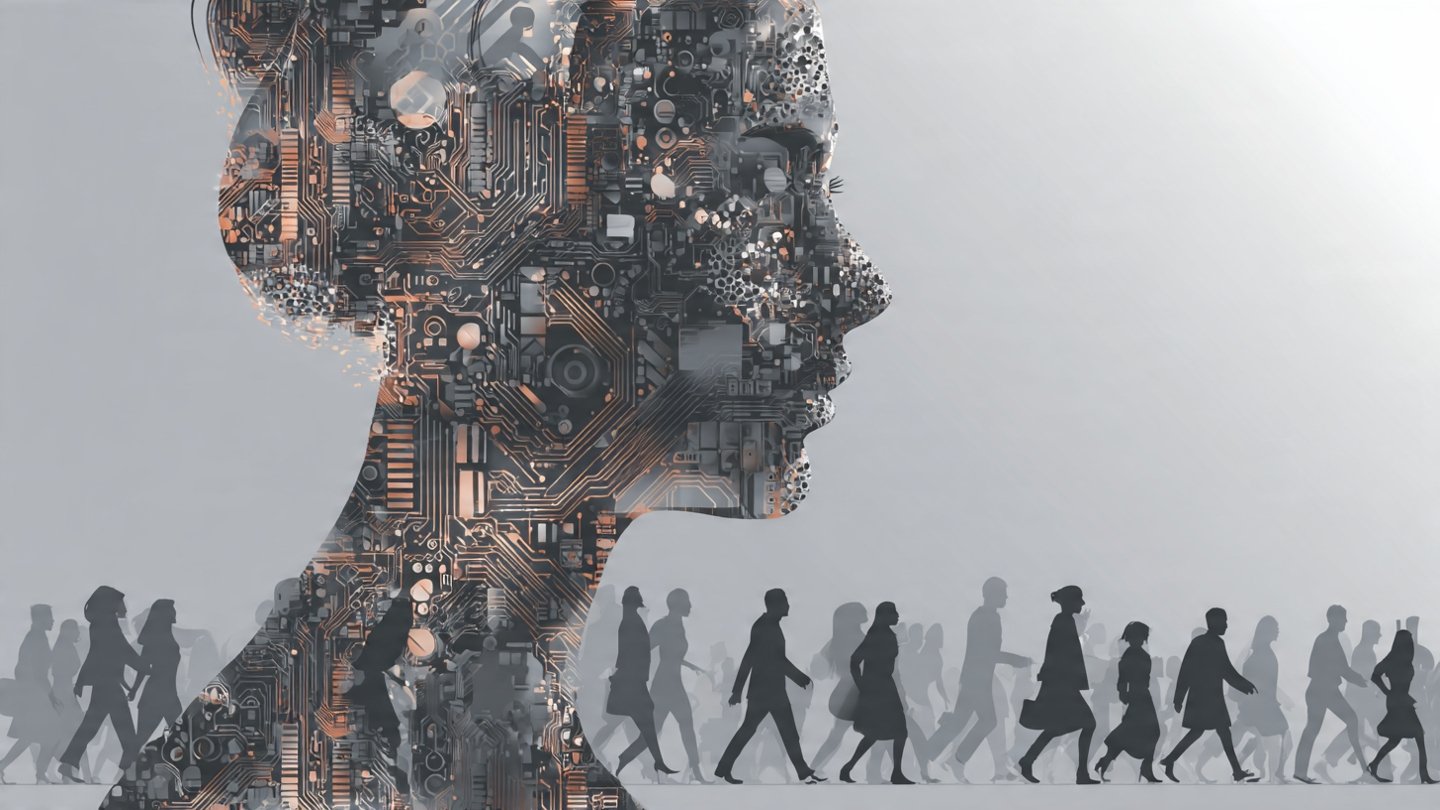
Creating a successful strategy for hiring AI talent requires a multifaceted approach that addresses the unique challenges of this competitive market. Organizations must develop comprehensive plans that go beyond traditional recruitment methods.
Defining Clear Role Requirements
The first step in building AI teams involves precisely defining the skills, experience, and attributes required for each position. Avoid the common mistake of creating overly broad job descriptions that seek “unicorn” candidates possessing every possible qualification. Instead, prioritize the core competencies essential for success in your specific context.
Consider your organization’s current AI maturity level, the types of problems you need to solve, and the support available for new hires. A startup building its first AI capability may need versatile generalists who can wear multiple hats, while an established AI organization might seek specialists with deep expertise in specific domains like computer vision or natural language processing.
Building Your Employer Brand
In a market where top AI professionals have numerous options, your organization’s reputation and value proposition become critical differentiators. Invest in building an employer brand that resonates with AI talent by highlighting your commitment to innovation, the interesting problems your teams solve, and the resources available to support professional growth.
Encourage team members to participate in technical conferences, contribute to open-source projects, and publish blog posts about their work. This visibility demonstrates your organization’s technical sophistication while providing authentic insights into your culture and the types of challenges your teams tackle.
Leveraging Diverse Sourcing Channels
Relying solely on traditional job boards limits your access to AI talent. Develop a multi-channel sourcing strategy that includes technical conferences, academic partnerships, hackathons, and specialized AI recruitment platforms. Build relationships with university departments producing strong AI graduates and establish internship programs that serve as talent pipelines.
Don’t overlook the potential of internal mobility—existing employees with strong quantitative backgrounds may be excellent candidates for transitioning into AI roles with appropriate training and support. Creating clear pathways for internal advancement can improve retention while building AI capabilities.
Implementing Effective Assessment Methods
Evaluating AI candidates requires assessment methods that accurately measure relevant skills while respecting candidates’ time. Develop technical evaluations that reflect real-world challenges your team faces rather than relying on generic coding tests or theoretical puzzles.
Consider multi-stage interview processes that include technical discussions, hands-on coding exercises, and scenario-based problem-solving. Involve multiple team members in the evaluation process to gain diverse perspectives and reduce individual bias. For senior positions, presentations on previous work or approach papers for hypothetical projects can provide valuable insights into candidates’ thinking and communication abilities.
Offering Competitive Compensation
While compensation alone won’t win top AI talent, uncompetitive offers will certainly eliminate you from consideration. Research market rates for different AI roles in your geographic location and industry, considering factors like company size, funding status, and technical prestige.
Beyond base salary, consider equity packages, performance bonuses, and comprehensive benefits. Many AI professionals also value perks like conference attendance budgets, continuing education allowances, and access to high-performance computing resources that enable them to work effectively.
Structuring Your AI Team for Success
The organizational structure you choose for your AI team significantly impacts its ability to deliver value. Different structures suit different organizational contexts, and many companies evolve their approach as their AI capabilities mature.
Centralized AI Teams
A centralized model concentrates AI talent in a single dedicated unit that serves the entire organization. This approach offers several advantages, including efficient resource utilization, consistent methodologies, and the ability to attract talent by creating a critical mass of AI expertise.
Centralized teams excel at developing reusable platforms and tools that benefit multiple business units. They can establish best practices for data governance, model development, and deployment, ensuring consistency across the organization. However, this structure can create challenges around prioritization when multiple business units compete for limited AI resources, and teams may struggle to develop deep domain expertise across diverse business areas.
Embedded AI Teams
The embedded model distributes AI professionals directly into business units or product teams. This approach ensures tight alignment between AI initiatives and business objectives while enabling team members to develop deep domain knowledge.
Embedded structures facilitate faster iteration and more responsive development, as AI teams work closely with stakeholders and can quickly adapt to changing requirements. The main challenges include potential duplication of effort across teams, difficulty sharing learnings and best practices, and the risk that embedded AI specialists may feel isolated from peers with similar technical backgrounds.
Hybrid Structures
Many mature organizations adopt hybrid approaches that combine elements of centralized and embedded models. A common pattern involves maintaining a central AI Center of Excellence (CoE) that provides infrastructure, tools, methodologies, and specialized expertise while also embedding AI team members within business units.
The CoE serves as a hub for innovation, research, and capability development while embedded teams handle business-specific implementation. This structure balances the benefits of specialization and scale with the advantages of domain proximity and business alignment. Success requires clear governance around resource allocation, career development, and knowledge sharing between central and embedded team members.
Agile Team Organization
Regardless of the broader organizational structure, successful AI teams typically adopt agile principles adapted to the unique characteristics of machine learning projects. Traditional sprint-based planning requires modification to accommodate the experimental nature of AI work, where outcomes are often uncertain and timelines difficult to predict precisely.
Consider implementing flexible sprint structures that allocate time for both planned deliverables and exploratory research. Establish clear criteria for deciding when to persevere with an approach versus pivoting to alternatives. Create mechanisms for rapid prototyping and validation that enable teams to test hypotheses before committing to full implementation.
Managing AI Teams Effectively
Managing AI talent requires approaches that differ from traditional software development management. The experimental nature of AI work, the specialized skills involved, and the interdisciplinary collaboration required all demand adaptive management strategies.
Setting Clear Objectives and Expectations
Effective AI team management begins with establishing clear objectives that balance business value with technical feasibility. Work with your team to translate business goals into measurable technical metrics, recognizing that AI projects often involve iterative exploration rather than predetermined solutions.
Set expectations that acknowledge the inherent uncertainty in AI development. Help stakeholders understand that not every experiment will succeed and that failure is a necessary part of the innovation process. Establish metrics that reward both successful outcomes and valuable learning from unsuccessful attempts.
Fostering a Culture of Experimentation
The most innovative AI teams operate in cultures that encourage calculated risk-taking and view failures as learning opportunities. Create psychological safety where team members feel comfortable proposing unconventional approaches, challenging assumptions, and admitting when something isn’t working.
Implement regular knowledge-sharing sessions where team members present recent learnings, discuss interesting papers, and explore new techniques. Encourage participation in external communities through conference attendance, meetup presentations, and contributions to open-source projects. This engagement keeps skills current while building your organization’s reputation in the AI community.
Balancing Research and Production
One of the key challenges in managing AI teams involves balancing the desire to explore cutting-edge techniques with the need to deliver production systems that generate business value. Establish explicit frameworks for making these trade-offs, considering factors like timeline pressures, available resources, and risk tolerance.
Some organizations adopt “innovation time” policies that dedicate a percentage of team capacity to exploratory research and learning. Others create parallel tracks where some team members focus on production systems while others investigate emerging technologies. Find approaches that work for your context while ensuring that both innovation and delivery receive appropriate attention.
Enabling Continuous Learning
The rapid pace of advancement in artificial intelligence makes continuous learning essential for maintaining team effectiveness. Provide resources for professional development, including access to online courses, conference attendance, and dedicated time for studying new techniques.
Consider implementing internal learning programs where senior team members mentor junior colleagues, or establish book clubs and paper reading groups that create structured opportunities for collective learning. Support team members pursuing advanced degrees or certifications relevant to their work.
Facilitating Cross-Functional Collaboration
Successful AI projects require seamless collaboration between technical team members and business stakeholders. Managing AI teams effectively means breaking down silos and creating processes that enable productive interaction across disciplines.
Establish regular touchpoints between AI teams and business units to ensure ongoing alignment and fast feedback loops. Train technical team members on effective communication with non-technical audiences, and educate business stakeholders about AI capabilities and limitations. Consider embedding liaison roles that specifically focus on translation between technical and business perspectives.
Providing the Right Tools and Infrastructure
AI professionals require powerful tools and infrastructure to work effectively. Invest in high-performance computing resources, whether through on-premises clusters or cloud-based services. Provide access to comprehensive data platforms, modern development environments, and collaboration tools that facilitate team coordination.
Don’t underestimate the importance of reducing friction in the development process. Time spent waiting for compute resources, struggling with data access, or wrestling with inadequate tooling diminishes productivity and frustrates team members. Make infrastructure investment a priority that enables rather than constrains team capabilities.
Building Diverse and Inclusive AI Teams
Creating diverse AI teams isn’t just a matter of equity—it’s a business imperative that directly impacts the quality and applicability of AI solutions. Homogeneous teams risk building systems that perpetuate biases and fail to serve diverse user populations effectively.
Addressing Pipeline Challenges
The AI field faces well-documented diversity challenges, with women and underrepresented minorities significantly underrepresented among AI professionals. Addressing these imbalances requires proactive efforts to build diverse talent pipelines starting early in the educational journey.
Partner with universities and organizations working to increase diversity in computer science and related fields. Support outreach programs, mentorship initiatives, and scholarship funds that help underrepresented students pursue AI careers. Create internship programs that provide meaningful experience and clear pathways to full-time employment.
Implementing Inclusive Hiring Practices
Examine your recruitment and selection processes for potential biases that may discourage diverse candidates. Use structured interview processes with standardized evaluation criteria to reduce subjective bias. Ensure diverse representation on interview panels and in decision-making roles.
Expand your definition of qualified candidates beyond traditional markers. Consider candidates with non-linear career paths, those returning to the workforce after career breaks, and individuals with valuable domain expertise, even if they lack formal AI credentials. Provide resources and support that enable promising candidates to develop necessary technical skills.
Creating Inclusive Team Environments
Hiring diverse talent is only the first step—retention requires creating genuinely inclusive environments where all team members can thrive. Foster cultures that value diverse perspectives, challenge biased assumptions, and actively address microaggressions and exclusionary behaviors.
Provide mentorship and sponsorship opportunities that help underrepresented team members advance their careers. Create employee resource groups that offer community and support. Regularly assess team dynamics and gather feedback on inclusion, using insights to continuously improve your approach.
Retaining AI Talent

In a market where AI professionals regularly field unsolicited recruitment offers, retention requires ongoing attention and investment. The cost of turnover extends beyond replacement expenses to include lost institutional knowledge, disrupted projects, and impacts on team morale.
Providing Growth Opportunities
Top AI talent seeks continuous professional growth. Create clear career progression paths that offer advancement opportunities beyond management roles, recognizing that many technical professionals prefer to deepen their expertise rather than transition to people management.
Implement dual-track career frameworks that offer parallel advancement paths for individual contributors and managers, with comparable compensation and prestige. Provide opportunities for team members to work on diverse projects that expand their skills and expose them to new domains and techniques.
Recognizing Contributions
Recognition and appreciation significantly impact retention. Implement formal recognition programs that celebrate both major achievements and ongoing contributions. Ensure that AI team members receive credit for their work through co-authorship on papers, acknowledgment in product launches, and visibility with senior leadership.
Create opportunities for team members to present their work at conferences, contribute to open-source projects, and build their professional reputations. Many AI professionals value the opportunity to establish themselves as experts in their field, and supporting these efforts benefits both individuals and your organization.
Maintaining Competitive Compensation
Regularly review compensation to ensure it remains competitive with market rates. Don’t wait for team members to bring competing offers before addressing compensation gaps. Implement regular market reviews and adjust salaries proactively to retain top performers.
Consider creative compensation structures like spot bonuses for exceptional contributions, project completion bonuses, and retention packages for critical team members. While compensation alone won’t retain talent indefinitely, falling behind market rates virtually guarantees turnover.
Measuring AI Team Performance
Effective management of AI teams requires appropriate metrics that capture value delivery while accounting for the experimental nature of AI work. Traditional software development metrics often fall short when applied to machine learning projects.
Establishing Meaningful KPIs
Develop key performance indicators that balance multiple dimensions of team performance. Technical metrics like model accuracy, latency, and system reliability matter, but so do business outcomes like revenue impact, cost savings, and user satisfaction.
Consider establishing tiered metrics that distinguish between research exploration, proof-of-concept development, and production deployment. Recognize that appropriate success criteria differ across these stages—a research project that determines an approach won’t work provides valuable information even without producing a deployable model.
Tracking Business Impact
Ultimately, AI teams exist to generate business value. Implement mechanisms to track and attribute business outcomes to AI initiatives. This might include A/B testing frameworks that measure the impact of new models, attribution models that connect AI capabilities to revenue or cost metrics, and regular business reviews that assess strategic alignment.
Be rigorous about measuring actual impact rather than potential value. Avoid the trap of counting models built or features deployed without verifying that these capabilities deliver tangible benefits. Honest assessment of impact enables better prioritization and investment decisions.
Balancing Quantitative and Qualitative Measures
While quantitative metrics provide an objective assessment, qualitative factors also matter. Gather feedback from stakeholders about their satisfaction with AI team collaboration, responsiveness, and communication. Assess team health through engagement surveys, turnover rates, and informal check-ins.
Pay attention to leading indicators like the speed of experimentation, the quality of documentation, and the robustness of development processes. These factors predict future performance and identify areas for improvement before they impact delivery.
Future-Proofing Your AI Team
The field of artificial intelligence continues to evolve rapidly, with new techniques, tools, and best practices emerging regularly. Building AI teams that remain effective over time requires approaches that embrace change and position your organization to capitalize on future developments.
Investing in Continuous Upskilling
Make learning and development a core component of team operations rather than an afterthought. Allocate dedicated time for skill development, provide resources for courses and certifications, and create internal knowledge-sharing mechanisms that help the entire team benefit from individual learning.
Stay connected to the broader AI community through conference participation, industry partnerships, and engagement with academic institutions. These connections provide early visibility into emerging trends and access to new ideas that can inform your strategy.
Building Adaptable Processes
Avoid rigid processes that assume static technology stacks and unchanging best practices. Instead, implement flexible frameworks that can accommodate new tools, techniques, and methodologies as the field evolves. Regularly review and update your practices based on team feedback and industry developments. Foster a culture that values experimentation with new approaches while maintaining stability in production systems. Create safe environments for testing emerging technologies before committing to broader adoption.
Developing Strategic Partnerships
Consider partnerships with technology vendors, research institutions, and consultancies that can supplement your internal capabilities and provide access to specialized expertise. These relationships can accelerate your ability to adopt new technologies and tap into knowledge that would be difficult to develop internally.
Engage with open-source communities and contribute to projects relevant to your work. This engagement provides learning opportunities while building your organization’s reputation and potentially attracting talent interested in your contributions.
More Read: AI Governance Framework Policies and Procedures Guide
Conclusion
Building AI teams that drive sustained business value requires a comprehensive approach spanning strategic talent acquisition, thoughtful organizational design, and adaptive management practices. Success demands more than assembling technically skilled individuals—it requires creating environments where diverse teams can collaborate effectively, experiment boldly, and continuously evolve their capabilities alongside rapid technological advancement.
Organizations that invest in developing compelling value propositions for AI talent, implement inclusive hiring and retention practices, establish clear frameworks for measuring impact, and foster cultures of continuous learning position themselves to capitalize on artificial intelligence’s transformative potential. As AI becomes increasingly central to competitive advantage across industries, the ability to attract, develop, and retain exceptional AI professionals while managing them in ways that balance innovation with delivery will distinguish market leaders from followers. By following the strategies and best practices outlined in this guide, you can build AI teams that not only deliver immediate value but also establish sustainable capabilities that drive long-term organizational success in an AI-driven future.




